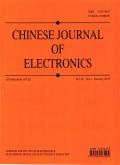High-Resolution ISAR Imaging for Detection of Micro Damages on Spacecraft Thermal Protection System
IF 3
4区 计算机科学
Q3 ENGINEERING, ELECTRICAL & ELECTRONIC
引用次数: 0
Abstract
The thermal protection system (TPS) is an essential component that guarantees the safe flight of high-speed spacecraft. However, the TPS is bound to suffer various level of damages during flight missions, among which the micro damages are difficult to distinguish from optical images. In this paper, we propose a novel approach to detect tiny surface damages of TPS for spacecraft by using inverse synthetic aperture radar (ISAR) imaging. To accomplish this, the procedure consists of three components: electromagnetic scattering simulation, 2-D ISAR imaging, and damage detection and identification. Different types of common TPS surface micro damages such as debonding, cracks, holes, and warpage are simulated. The obtained high-precision 2-D images prominently display the structure and morphology of micro damages. Finally, a relative entropy-based damage detection and identification method is proposed using the established damage characteristics database. The experimental results have demonstrated that by comparing the differences in the statistical characteristics between the damaged and undamaged models, the monitoring and identification of the micro damages can be successfully realized. Overall, the proposed approach offers a promising solution for monitoring the status of TPS in real time and enhancing the safety of high-speed spacecraft during flight missions.航天器热防护系统微损伤的高分辨率ISAR成像检测
热防护系统(TPS)是保证高速航天器安全飞行的重要部件。然而,TPS在飞行任务中必然会遭受不同程度的损伤,其中微观损伤难以从光学图像中识别出来。本文提出了一种利用逆合成孔径雷达(ISAR)成像检测航天器TPS表面微小损伤的新方法。为了实现这一目标,该过程由三个部分组成:电磁散射模拟、二维ISAR成像以及损伤检测和识别。模拟了不同类型的常见TPS表面微损伤,如脱粘、裂纹、孔洞和翘曲。获得的高精度二维图像清晰地显示了微损伤的结构和形态。最后,利用已建立的损伤特征库,提出了一种基于相对熵的损伤检测与识别方法。实验结果表明,通过比较损伤模型与未损伤模型统计特征的差异,可以成功地实现对微损伤的监测与识别。总体而言,该方法为实时监测TPS状态和提高高速航天器飞行任务的安全性提供了一种有希望的解决方案。
本文章由计算机程序翻译,如有差异,请以英文原文为准。
求助全文
约1分钟内获得全文
求助全文
来源期刊

Chinese Journal of Electronics
工程技术-工程:电子与电气
CiteScore
3.70
自引率
16.70%
发文量
342
审稿时长
12.0 months
期刊介绍:
CJE focuses on the emerging fields of electronics, publishing innovative and transformative research papers. Most of the papers published in CJE are from universities and research institutes, presenting their innovative research results. Both theoretical and practical contributions are encouraged, and original research papers reporting novel solutions to the hot topics in electronics are strongly recommended.
 求助内容:
求助内容: 应助结果提醒方式:
应助结果提醒方式:


